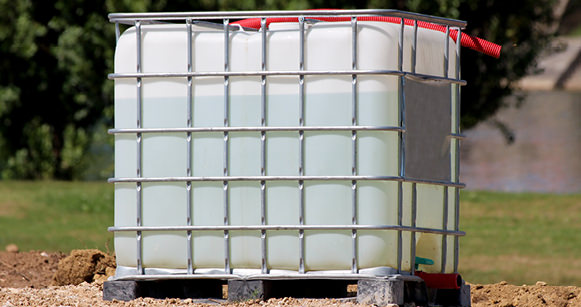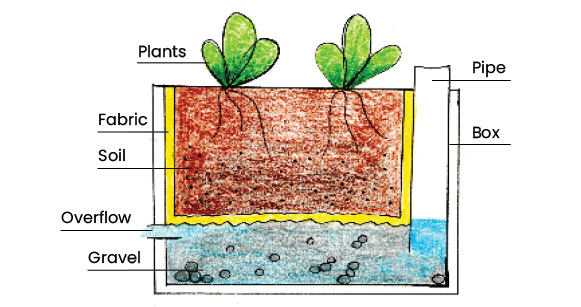STORY
The Junior Landcare group were so excited when Ms. Gorman told them that the school was getting a large wicking bed made for their school garden - finally! While their polystyrene wicking beds were working really well growing the many herbs and vegetables, the Junior Landcare group were running out of space. The new wicking bed will help the group with their goal of growing food in the garden to supply the canteen, and sell back produce to the families within the school and the local community. The produce sales helped them buy more seeds and equipment.
The Junior Landcare group were invited to help Anne and her team from the local Landcare group install the large wicking bed. Beth, Hayley and Eliza were fascinated to see the team apply the same process in making a wicking bed from a 1,000 litre container - just like the polystyrene wicking beds but much bigger! Now, the Junior Landcare group had so much more space to plant their favourite crops.

Wicking beds are a fantastic invention, allowing crops to be watered more efficiently. Making a large wicking bed does involve a few steps and some preparation, however the benefits of this extra effort are water conservation, improved plant growth and better crops.
The design of the wicking bed also provides opportunities to investigate scientific and mathematical ideas, such as volume, evaporation, transpiration, capillary action and plant life cycles.
For children to:
- enjoy being active and productive outdoors and build their social and teamwork skills
- value water conservation in food production
- follow the steps needed to plan, prepare, make, plant and care for the wicking bed
- understand how wicking beds use capillary action in soil
- use mathematics to estimate the capacity of the wicking bed to hold water and soil.
When making a large wicking bed in spring and summer, run as a morning activity to avoid heat stress for people and plants.
Introduction
Wicking beds use a water reservoir and the capillary action of soil to supply water to plants from below, and can be built from a variety of different materials. The bed featured in our learning activity is made out of a halved IBC tank, but they can be made out of an old bath, halved barrel, upside-down fridge or some other vessel. Constructing the wicking bed explores a range of sustainability concepts including water use, land use, reusing materials and technology in food production.
Making a large wicking bed is a great way to save water and grow a productive vegetable garden, and can often be found in kitchen gardens, household vegetable patches and learning centres. This activity does involve a few key steps, and requires adult supervision to ensure that the sequence is successfully followed.
*The time allocation for this activity refers to the building of a wicking bed, with all materials prepared and ready to be installed. Preparation details are included in the Educator Notes. Sourcing and preparing the materials prior to commencing the activity is essential to successful completion of this activity within the allotted time. You will need extra time again for planting.
Checklist
Instructions
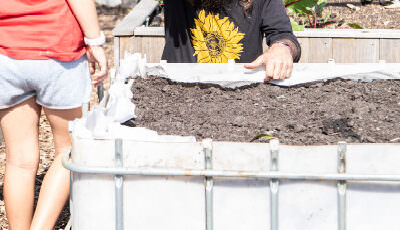
Step 1
Plan
Go through your checklist to ensure you have all the materials you need.
Finding an appropriate vessel for a reservoir is important. It needs to be watertight, or have the ability to be made watertight.
It also needs to be deep enough, but not too deep. Ideally, your reservoir should be about 150 – 200 mm deep, and then have a soil layer on top no more than 300mm deep. This is because soil only can wick effectively for around 300mm.
Refer to a planting guide like the Gardenate app to help plan what you intend to grow and when.
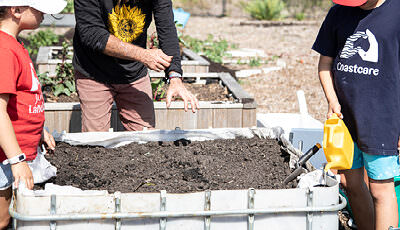
Step 2
Build
Run through the building plan with the children and outline the safety steps involved. Ensure that all of your materials are available and ready.
Ensure that the site is ready and everything is in the correct, level position. You will not be able to move the wicking bed later because it will be too heavy.
Introduce the activity sheet and discuss how you will investigate the capacity of the wicking bed as it is built.
Follow the steps in the video and educator notes to build your wicking bed.
Fill up the reservoir and use the activity sheet to discuss the capacity of the bed.
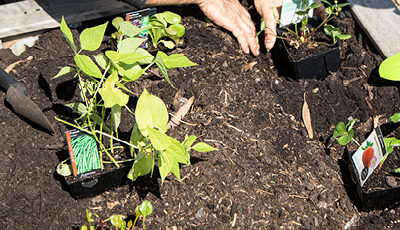
Step 3
Planting
Now you are ready to plant your wicking bed with your selected plants.
Discuss the plants that you have selected, explain why the wicking bed is being used to grow this crop and the advantages of growing your crop in this type of bed.
Plant labels are your friend. They will guide you on how, where and how far apart to plant your seedlings. You can use a measuring tape, a stick, or hand widths to help guide you.
Water your plants in after you plant them. You will need to water them directly for the first week or two. After this time, the wicking action will supply them with the moisture they need.
Mulch your planting with a good quality light mulch, such as lucerne or pea straw.
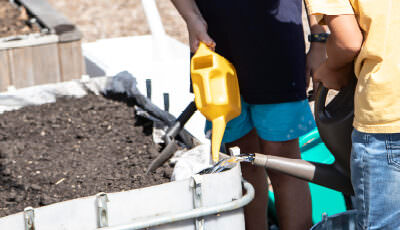
Step 4
Monitor and care
Check to see that the soil is wicking and keep the water topped up, especially as the plants get established.
You will know when to stop filling when water comes out the overflow pipe.
Cap the filling pipe with PVC capping or fly-mesh tied on with a rubber band, this will help reduce evaporation and the breeding of mosquitoes.
Like with all gardens, you will need to replenish the water in hotter, drier and windier weather – just a lot less often.
Extension Activity
Plant comparison – investigate just how much better the wicking bed is by also planting some of the plants in the ground nearby. What do we observe? How do their water requirements differ? Record your observations.
Water level diary: Using a ruler or dowel as a dip-stick, monitor the water level via the filling tube. Record this information in a diary, noting the water level, weather conditions and recent rainfall.
Curriculum and Framework Links
MATHEMATICS
Year 2: ACMMG037
Year 3: ACMMG061
Year 4: ACMMG290
Year 5: ACMMG108
Year 6: ACMMG136
Year 7: ACMMG160
Year 8: ACMMG195
SCIENCE
Year 2: ACSSU030, ACSHE035
Year 3: ACSSU044, ACSIS054
Year 4: ACSHE062, ACSIS064
Year 5: ACSHE083
Year 6: ACSSU094, ACSHE100
Year 7: ACSHE120
Year 8: ACSHE135
DESIGN AND TECHNOLOGIES
Year 2: ACTDEK003
Year 3 & 4: ACTDEP017
Year 5 & 6: ACTDEP019
Year 7 & 8: ACTDEK032
HEALTH AND PHYSICAL EDUCATION
Year 2: ACPPS018, ACPPS022, ACPPS023
Year 3 & 4: ACPPS036, ACPPS040, ACPPS041
Year 5 & 6: ACPPS054, ACPPS059
Year 7 & 8: ACPPS073, ACPPS078
HUMANITIES AND SOCIAL SCIENCES
Year 2: ACHASSI042
Year 3: ACHASSI052, ACHASSI059, ACHASSI060
Year 4: ACHASSI080, ACHASSK088, ACHASSK090
Year 5: ACHASSI102, ACHASSK120
Year 6: ACHASSI122, ACHASSI130
GENERAL CAPABILITIES
Critical and Creative Thinking
Intercultural Understanding
ETHICAL UNDERSTANDING
Exploring values, rights and responsibilities.
PERSONAL AND SOCIAL CAPABILITY
Social awareness
CURRICULUM CONNECTIONS
Outdoor Learning
CROSS CURRICULUM PRIORITY
Sustainability
MY TIME, OUR PLACE: FRAMEWORK FOR SCHOOL AGE CARE
Outcome 2 and 4
Reference List
Look at this Junior Landcare story for inspiration on using wicking beds in a school food garden setting.
Download the Gardenate app or use the Gardenate website to help determine the timing, spacing, and other compatible plants required for your climate zone.
ONLINE RESOURCES
Find out more about wicking beds their advantages on the Gardening Australia website.
WATCH
ABC Gardening Australia has another wicking bed video, where they also discuss capillary action in the soil.
We value your feedback
When you have finished this learning activity, please tell us what you think with our survey.
Your feedback will help Landcare Australia improve the activities in the Junior Landcare Learning Centre.
Why not try one of our other Junior Landcare learning activities?
Love Letters to the Land
Biodiversity|First Nations Perspectives|Food Production|Waste Management
Creating a food garden: vision
Food Production
Creating a food garden: planting
Food Production
Creating a food garden: installing a no dig garden bed
Food Production

